The Trip Has Only Begun – My Japanese Journey
- Shihan Steve

- Oct 1
- 10 min read
Hey everyone,
I'm excited to share a blog post from one of our karateka from CKMA Barrie Dojo, Christopher Clayden.
Chris just got back from an awesome trip to Japan—and he made sure to squeeze some karate training in also! His journey took him from the busy streets of Tokyo to the Karate roots of Okinawa.
This post is a great read for anyone who loves martial arts and is planning a trip to Japan. Check out his firsthand experiences and great travel tips.
Enjoy the read!
Shihan Steve.
Osu!
The Trip Has Only Begun – My Japanese Journey
On Wednesday, August 6th, 2025, we departed from Toronto, and on the following day we landed at Haneda International Airport (HND) in Tokyo, Japan.
Our flight time was approximately 13.5 hours direct to Tokyo, and in my opinion, that was the easy part. The hard part was attempting to prepare for, and adjust to, the time difference of 13 hours ahead. Traveling to Japan felt like losing a day, and when returning home, it was like traveling back in time. I have traveled to other countries in the past where the time difference ranged from 3 to 5 hours, but nothing to this extreme.
That aside, the trip and experience itself were absolutely amazing, and I cannot wait to return — which I will do in the near future. Thus, my journey has only begun. I hope that by sharing some details here, it will help others who are interested in traveling to Japan and perhaps inspire fellow martial artists and enthusiasts alike to visit.
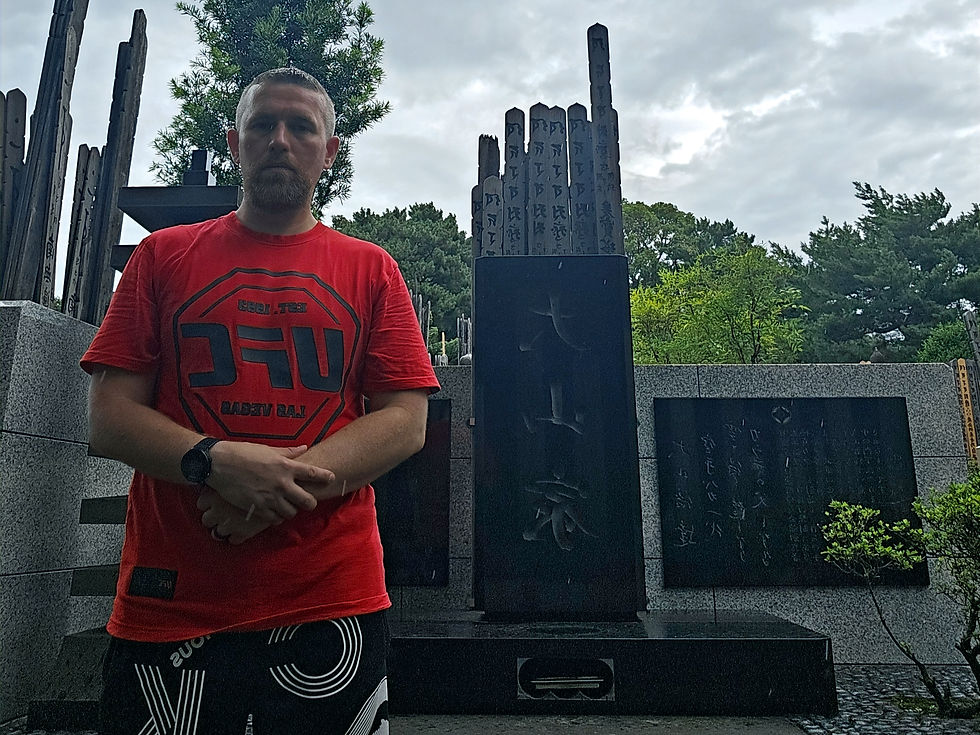
A Different World: Efficiency, Culture, and Kindness
This was a family vacation. Although not intended to be a martial arts trip, I was determined to train and experience something new while visiting. I was, of course, in Japan — and I was not going to pass up that opportunity.
To summarize my first visit in only a few words: Japan is a must-see travel destination, a different world that is extremely efficient yet still offers traditional and cultural values and experiences. It is a safe place to visit, its people are kind, and its hospitality was amazing. Japan is known for both its cleanliness and its high degree of respect, due to deeply ingrained cultural values. There is a real sense of shared responsibility, and it’s hard to miss.
Prior to departing, we developed a basic itinerary, which included our hotels and travel plans. We stayed in Tokyo, Kyoto, Osaka, and Naha, Okinawa, and were away for almost 17 days.
Money, Lodging, and Essential Travel Tips
The local currency in Japan is the Japanese Yen (¥/JPY), and as of today, $100 Canadian dollars is ¥10,702 Japanese Yen. The most expensive part of the trip was the direct flights to and from Japan. We found the cost of food, travel, and lodging within Japan to be exceptionally reasonable and convenient — and unquestionably economical compared to prices back home.
The hotels were very nice, many including natural onsens, and the food was amazing. We often enjoyed Wagyu or ramen, often with unlimited drinks (at least for an hour). All hotels included the traditional Japanese public baths, and in your rooms you would find yukata or jinbei provided for wear, along with slippers for many (or all) rooms. In many places, it is still customary to take off outdoor shoes at entrances and face politely toward doors for easy departure.
Getting Around with IC Cards
IC cards are big in Japan and are a convenient method for purchases. These come in physical or digital form and are reloadable cards that can be used to purchase fares on public transportation (trains) and to make payments at many restaurants, shops, and vending machines. We used these extensively throughout the trip for public transportation, food, and drinks from both local stores and vending machines.
Both Suica and Pasmo are popular IC cards, and we ended up using the digital Suica card and a special edition called the Welcome Suica card, reserved for tourists. This card has no activation fees, but whatever funds you don’t use, you lose after it expires. We used Suica cards throughout Japan, and they were very convenient — a simple tap everywhere you go.
Note: At the time of this writing, Suica digital is only available for iPhone — no Android option at the moment. I have both an iPhone and a Samsung, so I sympathize with how this is an an inconvenience for Android owners. Also, something to consider when choosing your IC card: the digital version won’t help if your phone’s battery is dead or lost. Keep it charged and safe, and you’ll be fine.

Public Transportation: Blow Away Efficiency
A couple of notes on our experiences with public transportation: we were absolutely blown away! Tokyo, being the largest metropolitan area in the world (40+ million people), has an extremely efficient train system. The trains were cheap, fast, always on time, never late, very convenient, and accessible across the entire metropolitan area. Lines run everywhere. We never once got lost and could easily get across town with little effort.
When comparing Japan to home, our public transportation system is so very, very far behind. Uber is available in Japan, but “GO,” a competitor service, appears to be more popular. In my honest opinion, you do not need to rent a car in any of the major cities. I did rent a car in Okinawa, which is an island — more on that below.
Food, Vending, and Respecting the Streets
Vending machines are conveniently located everywhere and mostly offer drinks and food. Food options are abundant everywhere you go! You’ll find that some restaurants have you preorder and pay for food outside the restaurant before you enter, often through a vending machine. Another surprise: some restaurants have mandatory appetizers that you are charged for. They are small, but something to be aware of.
When exploring city streets, you’ll also notice there are no garbage cans available and nowhere to sit outside. You are expected to eat at the restaurants you visit and keep any garbage with you until you can dispose of it at your residence.

Communications and Language
For communications, I purchased an eSIM. I’ve used these on previous international trips without issue. I paid $30 CAD for 20GB from a provider called Nomad.
Japanese, as you’d expect, is Japan’s first language. There are a few other languages spoken across the islands, but English is very common in the big cities — we never had a problem. That said, we spent some time learning Japanese before we left using Duolingo. There are many apps and options, but we felt it was more respectful to attempt to speak the local language when visiting a foreign country. You will likely receive warm smiles and gestures in response.
Another tip: we used Google Translate with Google Lens when attempting to read Japanese. This was a lifesaver! Simply point your phone camera at the text you want to translate, and it’s done in real time. Amazing!
Weather and Shinkansen Travel Weather!
When traveling to Japan during the summer, it is hot! Many days were well over 30−35 ∘ C, but add in the humidity, and it felt like 50−55 ∘ C. Long walks outside were equivalent to showering in sweat or stepping into a hot sauna. The heat was crazy, to say the least, and something you want to be prepared for during the summer months.
Depending on where you are in Japan and the time of year, you will also want to note typhoon season, with August and September being peak months.
When traveling from Tokyo to Kyoto, we took the Nozomi, the fastest Shinkansen (bullet train) available, reaching speeds of 300 km/h. I highly recommend purchasing reserved seats (otherwise you’re standing), along with the extra space option if you have luggage. Note: you cannot use IC cards to purchase fares on the Shinkansen.

Okinawa Car Rental and Driving Tips
As mentioned above, I did not rent a car until I was in Naha, Okinawa. Public transportation in Okinawa is not the same as in the big cities, and it was more convenient to get around by car. In Japan, you drive on the left-hand side of the road, sitting on the right-hand side of the car. This takes some time to adjust to! Like many foreign drivers, I often made the mistake of turning on my windshield wipers instead of my turn signals — everything felt backwards. When you see a car in broad daylight with no rain and the windshield wipers flaring rapidly, you know it’s likely a foreign driver.
To drive in Japan, you must have an International Driving Permit (IDP) issued under the 1949 Geneva Convention. For those of us back home, you can walk into your local CAA office with your driver’s license and obtain one for a nominal fee.
Cultural & Martial Arts Experiences
Exploring Authentic Cultural Experiences in Tokyo
During my recent trip to Tokyo, I had the unique opportunity to immerse myself in Zen meditation at a private temple with the head monk. This experience was complemented by trying my hand at calligraphy and savoring traditional matcha tea. Seeking authentic cultural experiences, Zen meditation served as a perfect way to reset at the beginning of my journey, providing me with valuable practices to carry back home.
The Sports and Entertainment Landscape
In terms of sports and entertainment, it became clear that baseball and sumo wrestling dominate public interest in Japan. Of course, no discussion about Japanese culture would be complete without mentioning martial arts, which have deep roots dating back to Japan’s feudal era and the Samurai.
Japanese Kickboxing: A Popular Choice
While I am not an expert in martial arts, my visit left me with the impression that Japanese kickboxing remains a popular sport. This popularity may stem from K-1 promotions, which gained prominence alongside the UFC and Pride during the 1990s and 2000s. The origins of Japanese kickboxing, similar to Dutch kickboxing, can be traced back to a blend of Kyokushin Karate, Muay Thai, and boxing. Conversations with other Sensei transitioning into kickboxing highlighted Kyokushin as a solid foundation for practitioners.
Training Tips for Martial Artists
For those looking to train in Kyokushin, numerous dojos throughout mainland Japan welcome foreign students. A must-visit is the Honbu Dojo (Kyokushin headquarters) located in Ikebukuro, Tokyo. This sacred space carries the spirit of Sosai Mas Oyama and offers a once-in-a-lifetime opportunity to train where legendary figures honed their skills. Unfortunately, as a solo karateka, I couldn’t train at the Honbu Dojo this time, but I hope to return with a class in the future. Note that currently, there are no options to visit the Honbu Dojo without participating in training.
Understanding Obon Holiday
During my travels in August, I experienced the Obon holiday, an annual Japanese Buddhist and cultural event honoring the spirits of ancestors. It is believed that spirits temporarily return to visit their families during this time. It’s important to note that many companies close for several days during Obon. Consequently, all dojos I contacted during this period were closed. Additionally, Obon is celebrated on different dates in mainland Japan compared to Okinawa, where the lunar calendar is used, while most of Japan follows the Gregorian calendar.
Training in Okinawa: The Birthplace of Karate
While training in Okinawa, I wore my white belt as a sign of respect for the dojos and for Okinawa, the birthplace of Karate. Interestingly, the term “Osu,” which is commonly used in many dojos, is considered crude in Okinawa. Instead, using “Hai” is more appropriate, a detail I found challenging to adjust to. Furthermore, most dojos in Okinawa conduct training in the heat without air conditioning, which is something to prepare for.
Notable Places Visited and Amazing Experiences
Here are some remarkable places I visited during my trip:
Shibuya Scramble Crossing in Shibuya, Tokyo (shopping and dining)
Sensō-ji (浅草寺), an ancient Buddhist temple in Asakusa, Tokyo (opened in 645 AD)
Meiji Shrine (明治神宮) in Shibuya, Tokyo – Shinto shrine
Imperial Palace and Garden in Chiyoda, Tokyo (a popular place for runners — I did a 5k around the garden)
Fushimi Inari Shrine (伏見稲荷大社, Fushimi Inari Taisha), a Shinto shrine in Kyoto
Emerald Beach, Naha, Okinawa
Isami store in Shinjuku, Tokyo (martial arts specialty shop)
Shureido store in Naha, Okinawa (famous Okinawan Karate store)
The Samurai and Ninja Museum
There are two locations for the Samurai and Ninja Museum in Japan: one in Tokyo and another in Kyoto. I had the pleasure of visiting both, and while they offer similar experiences, they are distinct in their presentations. A highlight was when my son won 1st place in the ninja star (shuriken/手裏剣) throwing competition, earning him the title of “champion” amidst applause — a proud moment for me as a dad!

Miyamoto Musashi: A Historical Encounter
While exploring the rich history of Miyamoto Musashi, I found myself in Ichijoji, part of Sakyo Ward in Kyoto City, also known as Ramen Town. Here, I discovered a monument dedicated to Musashi next to the original Sagarimatsu Tree at the Hachidai Shrine, a site of a major duel. Legend has it that Musashi stopped at this shrine before the duel to pray for assistance but ultimately decided to rely on his own abilities instead.
Paying Homage to the Legends
I took a moment to pay homage to Masutatsu “Mas” Oyama, the founder of Kyokushin Karate, at his memorial located in the Gokokuji Temple in Tokyo.
Incredible Training Opportunities
My journey included incredible training experiences at various dojos:
Kenshikai Dojo: My first experience with Okinawan Karate was in Shorin-ryu, training under grandmasters Hanshi Yoshimasa Kakazu (10th Dan) and Sensei Kenjiro Ueda (6th Dan in Shorin-ryu, 7th Dan in Shito-ryu, and 4th Dan in Ryukyu Kobudo). This was an unforgettable opportunity.
Asato Dojo: I had the chance to train in Kobudo under Sensei Tony Roberts, where I learned to use both a Bo (棒) and a Sai (釵). This resonated deeply with me, and I hope to continue practicing Kobudo.
Minami Shubukan Dojo: My trip concluded with Uechi-ryu training under Sensei Haruyoshi Shimabukuro (8th Dan). After two classes in the sweltering Okinawan heat, I was exhausted but invigorated. Uechi-ryu emphasized conditioning, focusing on hardening the body to withstand pain, which I found foundational to the practice.
Reflecting on my experiences in Japan, I am filled with gratitude for the cultural insights, training opportunities, and the chance to connect with the rich history of martial arts. I look forward to returning one day to continue my journey.
Final Reflections
Training in Okinawa was an amazing experience overall, and I highly recommend it for all martial arts enthusiasts alike. My only regret is that I did not have the opportunity to try Gōjū-ryū while visiting — but I will be back!
That said, I also didn’t have the opportunity to train in Kyokushin as a practitioner, and yet there is still so much more to see and try… like kickboxing? I can’t wait to go back. This journey has only just begun, and I’m excited to see what the future holds.
Osu!














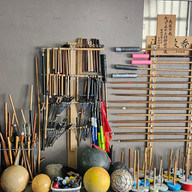





































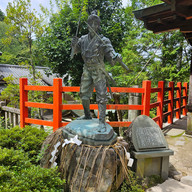

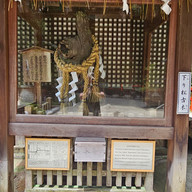









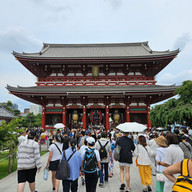















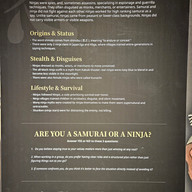













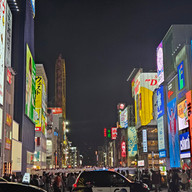











Comments